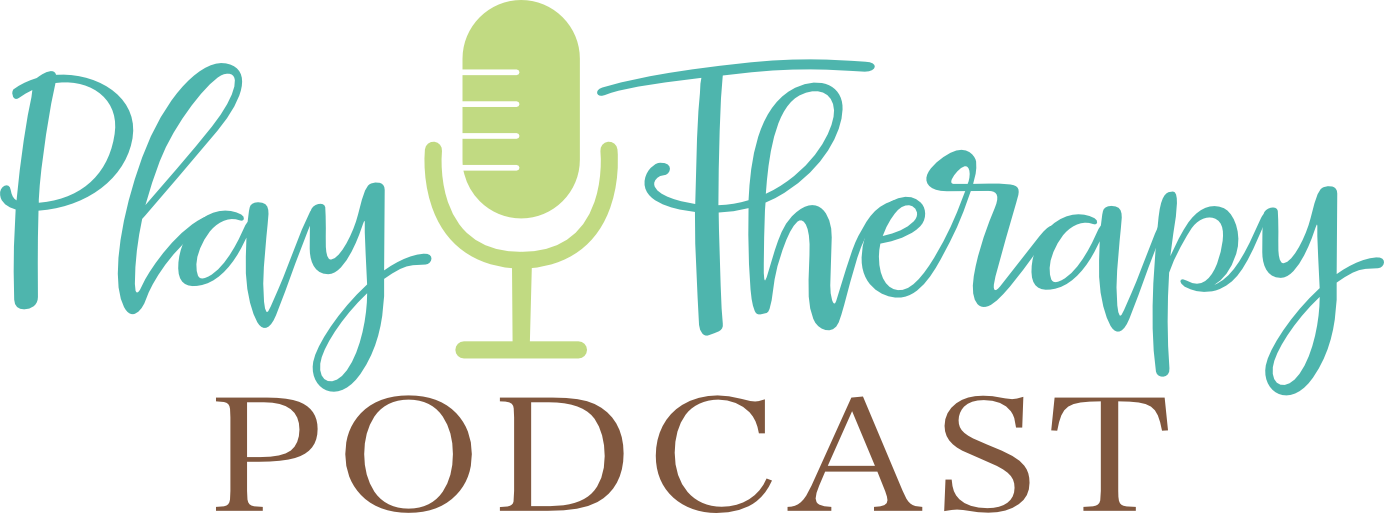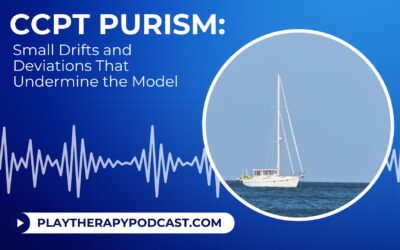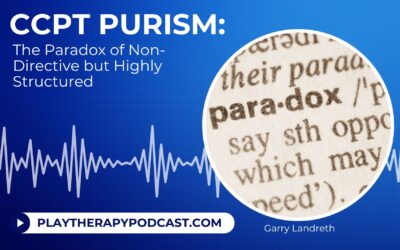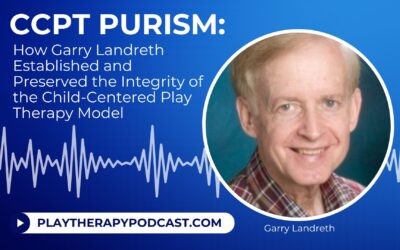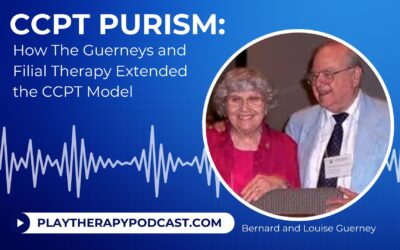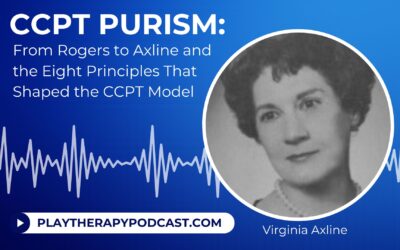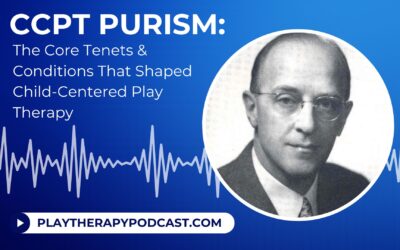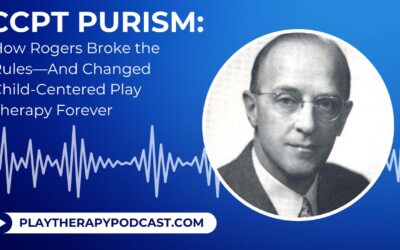Podcast Episodes
CCPT Purism: Small Drifts and Deviations That Undermine the Model
In this episode of the CCPT Purism series, I talk about a critical but often overlooked common drift points that shift us from pure CCPT practice. These are small, often unconscious shifts we make in session—like redirecting, interpreting play, or using reflective...
CCPT Purism: The Paradox of Non-Directive but Highly Structured
In this episode of the CCPT Purism series, I unpack one of the most misunderstood truths about Child-Centered Play Therapy: that while it’s non-directive, it is also deeply structured and intentional. I walk through the intentional ways structure shows up in CCPT—not...
Making Sense of “Baby Talk” in a CCPT Playroom: What It Means and How to Respond
In this episode, I answer a question from Kelli in Washington about how to respond when children use baby talk in the playroom. While it may seem like a small thing, baby talk always carries meaning in a session. I walk through three common reasons it shows...
“You Be the Baby!” — What to Do When Kids Assign You Roles — Staying Child-Centered During Dramatic Play
In this episode, I answer a question from Laura, a grad student in Canada who’s navigating how to stay fully adherent to the CCPT model during dramatic play—especially when a child assigns her a role and expects her to act it out. I walk through how we maintain a...
CCPT Purism: How Garry Landreth Established and Preserved the Integrity of the Child-Centered Play Therapy Model
In this episode of the CCPT Purism series, I focus on Garry Landreth and the essential role he played in shaping modern Child-Centered Play Therapy. While Rogers, Axline, and the Guerneys laid the philosophical and practical groundwork, Landreth gave the model a clear...
Q&A Lightning Round #8: Four Questions From Three Listeners Answered
In this episode, I answer four questions from three different listeners in another Q&A Lightning Round. I talk with Megan in Pennsylvania about how to present CCPT case conceptualizations in group supervision meetings when others don't understand or support the...
CCPT Purism: How The Guerneys and Filial Therapy Extended the CCPT Model
In this episode of the CCPT Purism series, I explore the work of Bernard and Louise Guerney, who extended the principles of child-centered play therapy beyond the playroom through the development of filial therapy. Their innovation marked a major turning point in the...
Supporting Parents Through Divorce: A Conversation with Dr. Lisa Marie Bobby
In this special episode, I’m joined by Dr. Lisa Marie Bobby—licensed psychologist, marriage and family therapist, and founder of Growing Self Counseling & Coaching—to talk about one of the most challenging dynamics we face as CCPTs: supporting children of divorce...
CCPT Purism: From Rogers to Axline and the Eight Principles That Shaped the Child-Centered Play Therapy Model
In this episode of the CCPT Purism series, I take you through the foundational role of Virginia Axline in translating Carl Rogers’ person-centered theory into what we now know as Child-Centered Play Therapy. Axline worked closely with Rogers and applied his concepts...
Playroom Representation: Sensitivity Without Over-Complication
In this episode, I answer a question from Mia in California about how to approach dollhouse families and representation in the CCPT playroom. We don’t often talk about specific toys, so I enjoyed diving into how children use dolls and figures to create family...
When Kids Say “Stop Copying Me”, Session Outside? Sandtray Use? Can I Take This Toy Home? Answering Real CCPT Questions
In this episode, I answer questions from Heather, who provides play therapy in a boys’ home setting for ages 10–12. We cover a wide range of topics, including how to respond when a child says “stop copying me” during reflective responding, how to handle requests to do...
CCPT Purism: The Core Tenets & Conditions That Shaped Child-Centered Play Therapy
In this episode, I continue the CCPT Purism series with a deep dive into the core tenets and core conditions of Child-Centered Play Therapy. I walk through Rogers' foundational ideas—including the tendency to actualize, self-concept, and the organismic valuing...
When Directive Play Therapy Backfires: A Case for CCPT
In this episode, I respond to a question from Sasha in Oregon about a challenging session with a 9-year-old client. She attempted to incorporate directive techniques to help him process his anger, but he resisted by shutting down and saying "no" to everything. This...
CCPT Purism (New Series): How Rogers Broke the Rules—And Changed Child-Centered Play Therapy Forever
In this episode, I kick off a brand new series: CCPT Purism—a deep dive into what it truly means to be a pure Child-Centered Play Therapist. I’ve seen a growing trend where therapists think they are practicing CCPT, but in reality, they’ve drifted from full adherence...
Room Wrecking, Risk-Taking, and Sensory-Seeking: What’s Behind the Play?
In this episode, I answer a question from Danielle in Georgia about a six-year-old child processing grief after the loss of his father. His play includes room wrecking, risk-taking, and sensory-seeking behaviors, and Danielle wanted insight into how these might relate...
